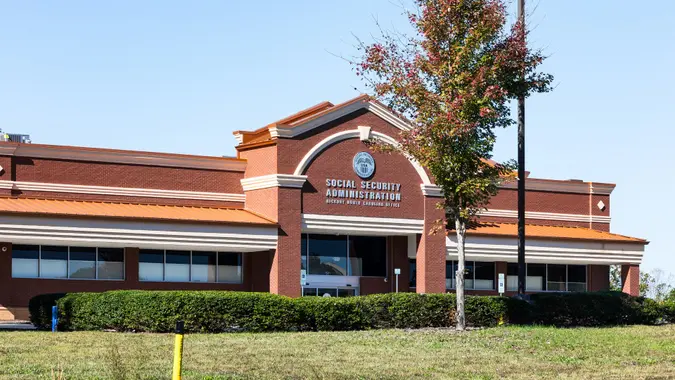How To Effectively Save For Retirement as a Gig Worker

Commitment to Our Readers
GOBankingRates' editorial team is committed to bringing you unbiased reviews and information. We use data-driven methodologies to evaluate financial products and services - our reviews and ratings are not influenced by advertisers. You can read more about our editorial guidelines and our products and services review methodology.

20 Years
Helping You Live Richer

Reviewed
by Experts

Trusted by
Millions of Readers
A growing number of Americans are reliant on gig work as their main source of income. In 2021, 31% of current or recent gig workers said this had been their main job over the past 12 months, according to the Pew Research Center. While there are plenty of pros of gig work, including increased flexibility, one of the drawbacks is that these jobs don’t typically come with access to an employer-sponsored retirement plan. Here’s how gig workers can effectively save for retirement outside of a work-sponsored plan.
Retirement Savings Options for Gig Workers
The best bet for gig workers who don’t have access to a 401(k) or 403(b) is to open an individual retirement account (IRA), said Andrew Meadows, SVP at Ubiquity Retirement + Savings.
“IRAs are the tried and true option for saving for retirement on your own,” he said. “It’s a very portable benefit and can accommodate taking rollovers from prior employer-sponsored accounts.”
However, there are some downsides to an IRA.
“The biggest downside to saving in an IRA is the low threshold for saving,” Meadows said. “In 2022, you can only save $6,000 in your IRA. That’s much smaller than what you could save as an employee in a 401(k) plan — $20,500. If you’re hoping to save more, there are also plans like the Single(k) that provide you an opportunity to set up your own 401(k) plan with yourself acting as both the employer and employee.”
These types of accounts typically have low fees, so they could be a good option if you are self-employed.
“In fact, many of these plans are advertised as ‘free,’ with the costs coming from the asset-based fees in the funds,” Meadows said. “These can often range from 2-3%, but they’re all charged and paid on the back end.”
When choosing a plan, be sure to do your research to find the best fit for you.
“No matter what way you choose to save, make sure you’re completely aware of how much it will cost and what types of services you get from the various providers,” Meadows said.
How To Find the Best Plan for You
“Choosing the right provider and plan for you is an important decision that will impact your future,” Meadows said. “The biggest decision at the start is to figure out how much you can and will save in the plan.”
If you already know you’re not going to meet the IRA limit, that could be a great way to start saving.
“IRAs are easy to open and operate, which leaves you the flexibility of saving without too much complication,” Meadows said. “However, if you’re ready to save more than that, the owner-only 401(k) could be a great option. For many in the gig economy, flexibility on how to access your savings might be very important. If that’s the case, you’ll want to find a 401(k) with a loan provision to provide you access to savings in an emergency.”
How To Save For Retirement With Fluctuating Income
Many gig workers experience ebbs and flows in their income — but ideally, you’ll continue to save for retirement throughout it all. You should try to stick to a certain percentage of your income, so some months that may be more and some months that may be less.
“The best part about savings plans is that you can save as much or as little as you like based on how the plan works,” Meadows said. “You’ve got lower limits in an IRA, and these often come at a fairly low cost or even ‘free.’ With a 401(k), there might be a bit higher of a cost, but you get the ability to save more in return. Neither of these options require you to save, and both offer the opportunity to save pre- or post-tax. If you are experiencing fluctuating income, it might be best to start out with an IRA, get into the habit of saving and determine in future years if you want to take your saving to a higher level.”
Even if you can only start by putting away a small amount per month, don’t delay in starting to save for your retirement.
“The biggest bit of advice is to just start saving if you aren’t right now,” Meadows said. “Any action is better than no action. The younger you are, the more time is an important factor. Retirement plans thrive due to compound interest. The longer you save, the bigger your nest egg and the more opportunity there is for it to grow. Start small, form a savings habit, and you’ll be well on your way to a secure and dignified retirement!”
More From GOBankingRates
 Written by
Written by  Edited by
Edited by 

























